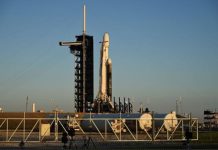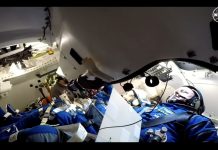
Oct. 23 (UPI) — NASA researchers have created a prototype of a technology that can diagnose a variety of illnesses and abnormalities just by analyzing compounds in a person’s breath.
NASA representatives presented the E-Nose Breathanalyzer, to members of David Grant USAF Medical Center this week, per an Air Force announcement.
The Breathanalyzer is currently under development at NASA’s Ames Research Center in Silicon Valley, but researchers say it will be able to diagnose a range of illnesses and other problems, including respiratory illnesses, infectious disease and cardiovascular conditions.
The technology could even be used to diagnose cancer, researchers say.
“The technology is designed to make rapid measurements, in less than 5 minutes, at the point of care, in a way that is completely non-invasive. When fully realized, the NASA E-Nose will open a new realm of medical care to both the warfighter and potential space travelers,” said Dr. David Loftus, NASA Ames Research Center medical officer and principal investigator of the Space Biosciences Research Branch.
Scientists have been investigating the possibilities of breath-based diagnosis since at least 2006.
At the beginning of 2019, researchers at Cancer Research UK Cambridge Center, in conjunction with Owlstone Medical, began clinical trials for a breath test that can discover multiple types of cancers.
And in 2016 scientists identified unique “breathprints” that correlate with certain diseases.
According to Loftus, NASA’S Breathanalyzer is handheld, making it useful for the Air Force during aeromedical evacuation, but also to NASA as a tool for monitoring the health of astronauts.
“Human exploration of space, to the Moon and Mars, will require compact medical diagnostics technologies that can be ruggedized for field use. The Air Force and other branches of the military share this requirement,” Loftus said.
Dr. Bradley Williams, 60th Medical Group clinical research administrator, also noted that the technology has big implications for civilian medicine.
“The Air Force and NASA share the same altruistic medical research mission. Together, we seek to develop the future medical care which will be needed by the U.S. Space Force and which will also be very useful to the rest of the nation’s hospitals,” Williams said.





